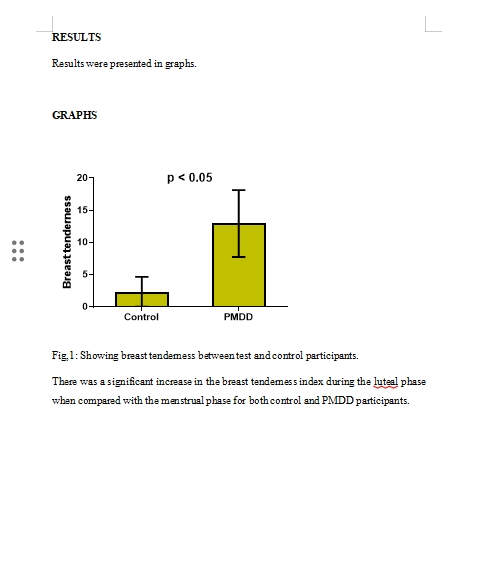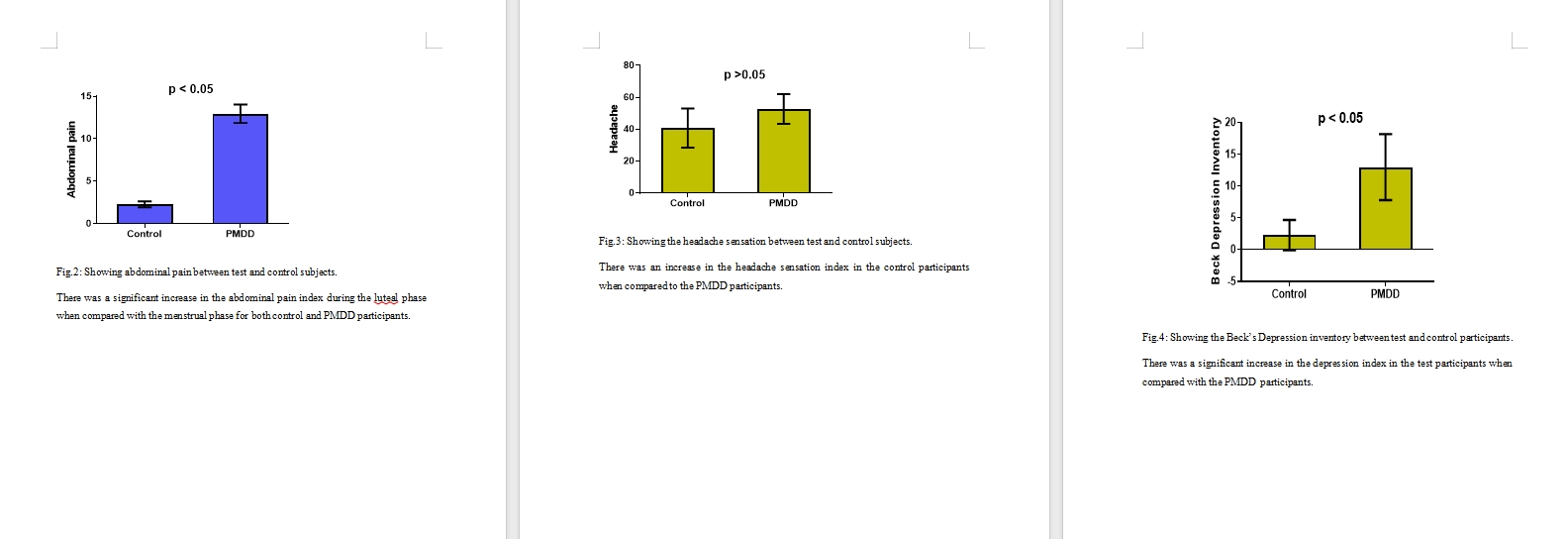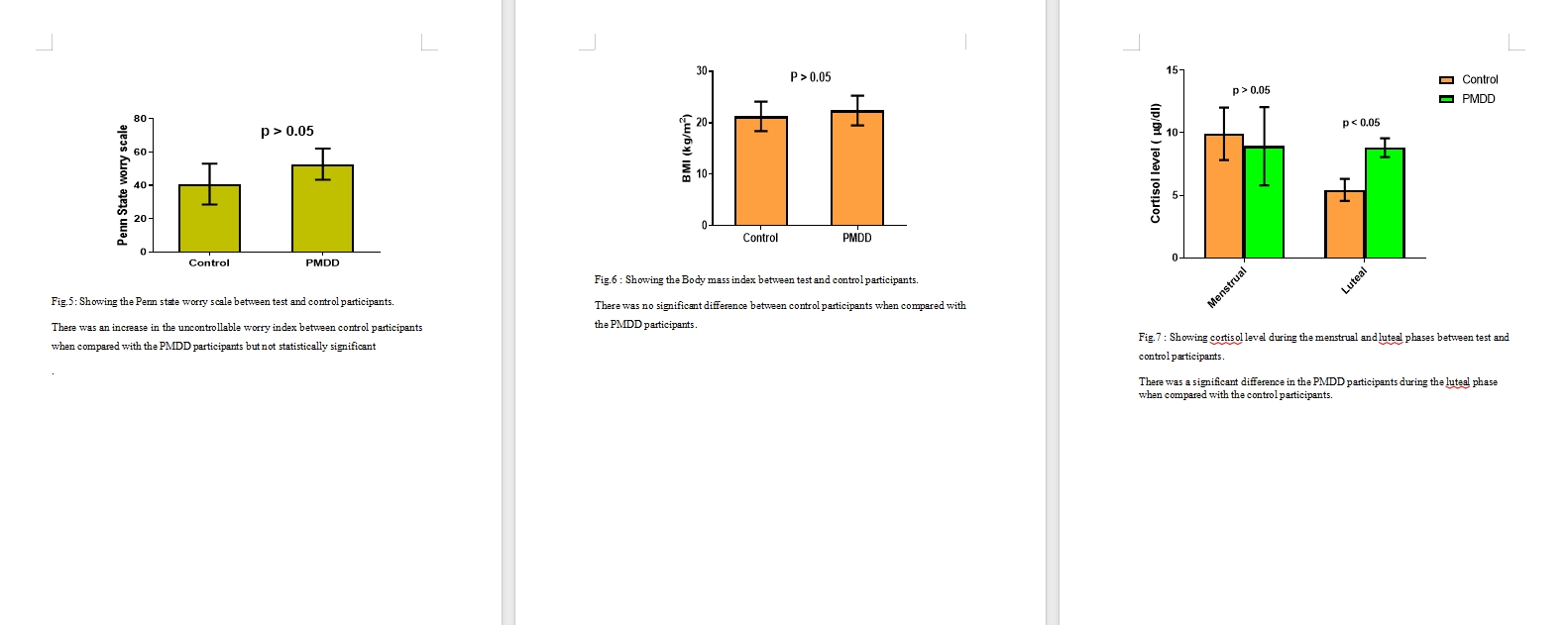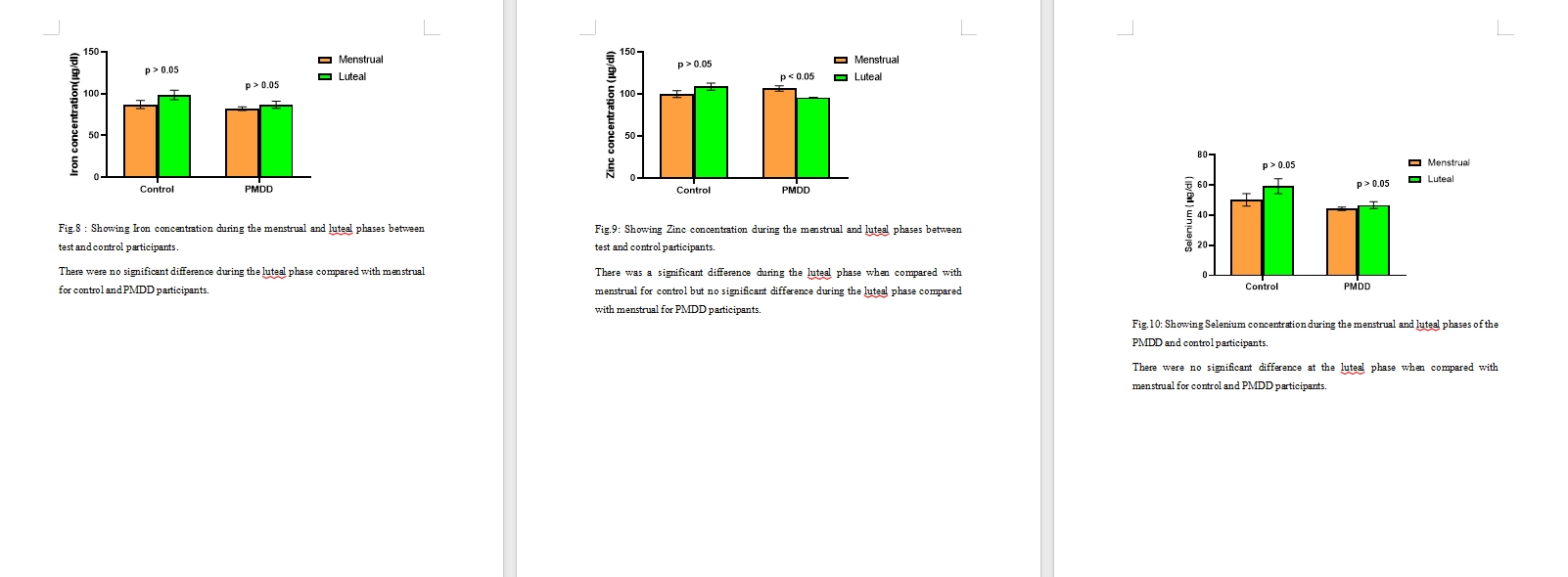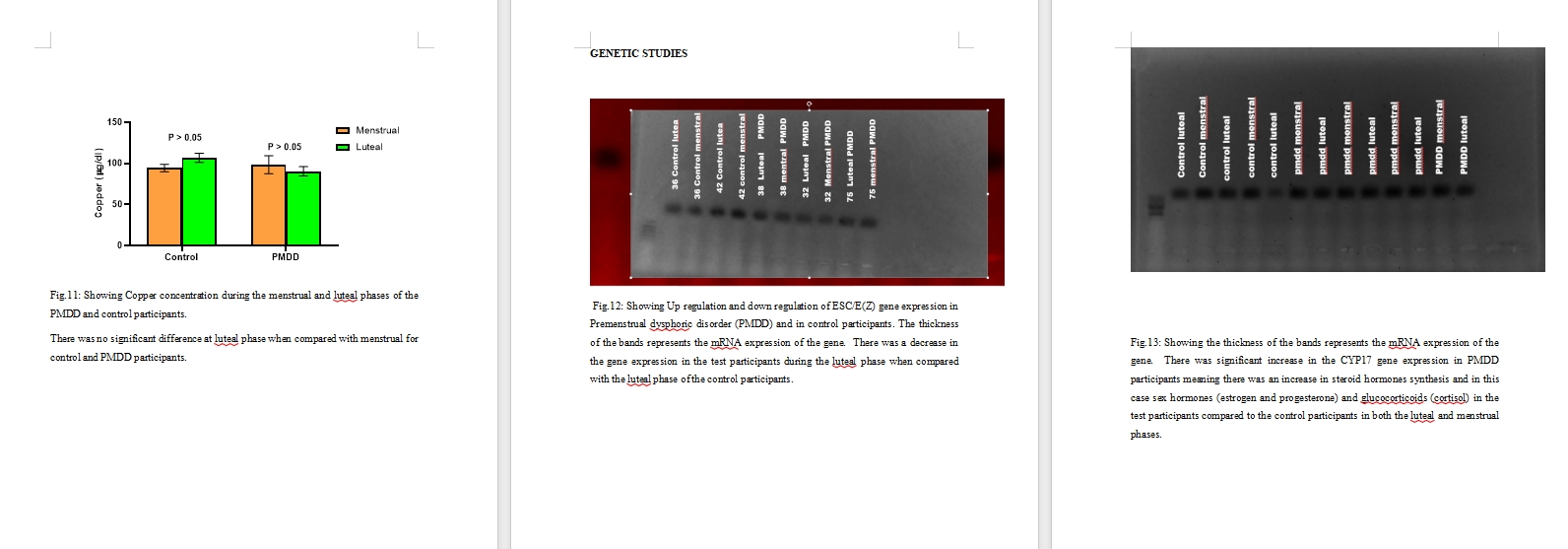Genetic Dynamics In An Interplay Between Micronutrient Plasma Values And Behavioural Responses To Stress In Undiagnosed Premenstrual Dysphoric Disorder
Onuyoh-Adaitire E*., Agoreyo F.O., Onuyoh-Adaitire B., Abayomi A., Tafamel, G, and Osayande, S.
Department of Physiology (Reproductive Physiology), Department of Physiology (Reproductive Physiology), Department of medical laboratory sciences (Haematology and blood transfusion science), Department of Physiology university of Benin, Department of Science Lab. Tech. University of Benin Benin city , Nigeria.
ABSTRACT
Behavioral patterns are the regular ways in which individuals act or respond to their environment, influenced by a combination of internal and external factors. Premenstrual Dysphoric Disorder (PMDD) is a pathological spectrum of emotional and somatic symptoms observed during the luteal phase of menstrual cycle interfering with the physical and social life of the individual. The aim of the study was to investigate the Genetic dynamics in an interplay between some micronutrient plasma values and behavioural responses to stress in undiagnosed PMDD. The study was carried out in Benin city, Nigeria. A total of 200 apparently healthy young female adults were recruited for this study. The various phases of the menstrual cycle were determined via gynecological questionnaires. They were classed into 2 groups: Those without PMDD symptoms (control) and those with PMDD symptoms (test). Five (5.0) mls of whole blood was collected, dispensed into Lithium heparin containers and centrifuged. Resulting plasma was separated into plain bottles and frozen for cortisol and trace metals analysis. One (1.0) ml was of whole blood was collected and dispensed into 0.5ml DNA shield container for genetic studies. Analyses were carried out in the University of Benin, University of Benin Teaching Hospital (UBTH) and Federal University of Technology, Akure (FUTA), Nigeria. All data were presented as mean ± standard error of mean (SEM). Statistical analysis was done using graph pad prism 8.1. The data was evaluated using two-way analysis of variance (ANOVA) utilizing the F test. Data was expressed as the mean value ± SEM for the control and test groups. Differences within the groups were then assessed using least significant difference (LSD) and p-values less than 0.05 (p<0.05) was considered statistically significant. Result showed that cortisol concentrations were significantly higher for the test participants during the luteal phase when compared with the menstrual phase (p<0.05). Plasma zinc concentration was significantly lower in the test subjects during the luteal phase compared to the menstrual phase (p<0.05). CYP 17 gene expression was significantly up regulated in the test subjects compared to control subjects during the luteal of the menstrual cycle (p<0.05). The ESC/ E (z) genes were significantly down regulated in the test subjects when compared with the control subjects (p<0.05). In conclusion, The study demonstrated a significant association between reduced plasma zinc concentration and increased irritable and depressed-state behavior.
Key Words: Premenstrual Dysphoric Disorder (PMDD), Irritableness, Depressed-state, Extra sex comb/Enhancer of Zest genes, Cytochrome P450 -17 gene.

